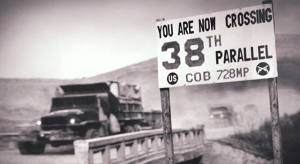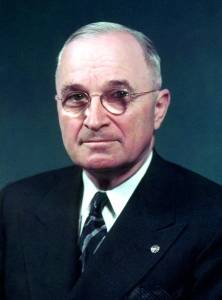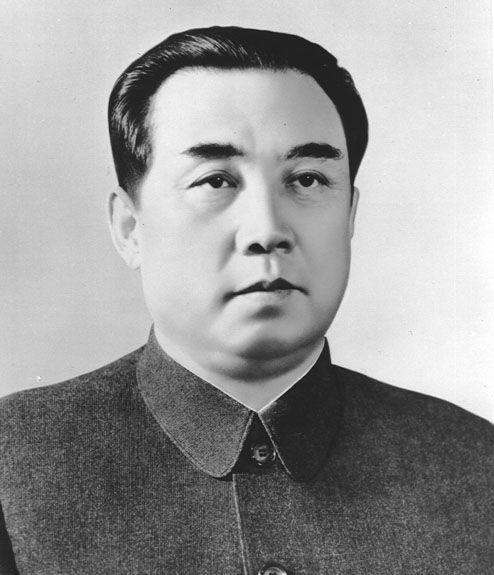I have little patience with people who utter such absurd lines as “I don’t like history,” “history is boring” and “what’s the use of studying history since it’s all in the past?” Before telling them to shut the heck up, I remind them that there are few subjects more worthy of our attention than history.
A case in point is an event from 70 years ago today, June 25, 2020. Kim Il-sung, leader of North Korea since the Soviets put him in power in 1945, precipitated the Korean War. He did so after Secretary of State Dean Acheson made a speech that seemed to indicate the U.S. would take a hands-off approach if an inter-Korean  conflict were to erupt. Kim also got tacit permission from Joseph Stalin and Mao Zedong, his fellow Communist dictators. When he said, “go,” a well-trained, highly disciplined army equipped with the latest Soviet military technology—especially T-34 tanks—sprang an early-morning attack. About 75,000 men raced across the 38th parallel from multiple points but their main focus was Seoul. Kim wanted no less than to “unify the motherland.” South Korean President Syngman Rhee had argued for the same thing non-stop since taking office in 1948.
conflict were to erupt. Kim also got tacit permission from Joseph Stalin and Mao Zedong, his fellow Communist dictators. When he said, “go,” a well-trained, highly disciplined army equipped with the latest Soviet military technology—especially T-34 tanks—sprang an early-morning attack. About 75,000 men raced across the 38th parallel from multiple points but their main focus was Seoul. Kim wanted no less than to “unify the motherland.” South Korean President Syngman Rhee had argued for the same thing non-stop since taking office in 1948.
Within three days, Rhee and much of his government had crossed the Han River and fled south. The North Korean Ramhongsaek Konghwagukgi was run up the flagpole at the capitol. With the ROK military no match for that of the DPRK, this war would have been over quickly were it not for the Americans, undisputed difference-makers in World War II. The man of the hour was President Harry Truman. Although the U.S’s primary interest then was Europe, he did not dither. With support from the United Nations Security Council, Truman ordered air and sea forces brought over from Japan. They were unable to hold back the North Koreans in those crucial early weeks, which explains why the South Koreans, Americans and other allies hustled down to the protection of the Busan Perimeter.
There is no need to detail other related events—Douglas MacArthur’s Incheon Landing, the drive up to the Yalu River and the Chinese intervention, followed by yet another retreat south and the negotiations that led to the signing of an  armistice. More than 5 million people, both military and civilian, died during the war. I mourn every one of them, even the North Koreans and Chinese. This is where a sober study of history comes in, as it allows me to see the enemy (and make no mistake, the North Koreans and Chinese were our enemies then) as human.
armistice. More than 5 million people, both military and civilian, died during the war. I mourn every one of them, even the North Koreans and Chinese. This is where a sober study of history comes in, as it allows me to see the enemy (and make no mistake, the North Koreans and Chinese were our enemies then) as human.
Kim Il-sung felt justified in sending his men over the border that morning. He was in firm control of North Korea, having sponsored massive purges and built his cult of personality—he’d had a mystical birth at Mount Baekdu, defeated the Japanese almost single-handedly, could change the weather and deserved mega-statues all over the country—and expected to be welcomed with rose petals in Seoul. He was actually surprised to find that the South Koreans liked freedom and a capitalistic economy rather than what he had instituted in the north. The southerners stood and fought, and so did their American allies.
The U.S.’s geopolitical motives were less than pure, but that seems secondary because the very existence of the Republic of Korea was in doubt in the hot summer of 1950. If the Americans were reluctant allies, they nevertheless committed a lot of treasure and blood to preserving democracy in the southern half of the peninsula.
Had Truman not acted swiftly and with vigor, Kim’s takeover would have been a fait accompli. Western powers might have protested and grumbled, but they would have soon acquiesced. “Too bad, but it’s just Korea,” I can almost hear them saying. Japan seemed to be of far greater importance, notwithstanding the fact that it was on the wrong side of World War II.
I have no illusions about South Korea being a perfect place. We have fundamental economic and political problems, a few of which might have been ameliorated with wiser guidance from the Americans in the 1940s and 1950s. But they are miniscule in comparison with what obtains up north. Many times I have been at the demilitarized zone and gazed toward the other side. I think of the suffering people—not the Kim family, not the military elites and their wives and kids who shop at Pyongyang’s malls, cavort at Munsu Water Park in the summer, ski at Yangdok Hot Spring Cultural Recreation Center in the winter and eat to their hearts’ content—and commiserate.
The facts of history draw me to Tapgol Park every March 1 and Seoul National Cemetery every Memorial Day, and they are why I have visited more than 100 Korean War memorials during my travels around this country. Acknowledging the sacrifices made by so many gutsy people is the least I can do.


2 Comments
Richard, yes history is boring because most of us don’t forgot the importance why we need to study our past for us to understand and appreciate our present. As a Filipino, I am proud to say that Philippines has also been a part of Korean war. We are the first Asian country who sent sodiers, 7,400+ of Philippine Army to defend South Korea from 1950-1955 and 112 of them died.
Never boring to me! We are grateful to the Filipinos who came and helped in our time of need. I visited the memorial to your countrymen a few years ago.
Add Comment